by
Larry Pearce
12/13/17
Click 1. INTRODUCTION
Click 2. SKIBO, NEW SCOTLAND, CONNOQUENESSING, BUTLER CO, PA
Click 3. NEW WESTMORELAND, PA
Click 4. MISCELLANEOUS MATERIAL ON EARLY JAMES GRAYS
Click 5. CONCLUSION
Click 6. FOOTNOTES
Click 7. WORKS CITED & DOCUMENTATION
1. INTRODUCTION
This family researcher once believed that his three-times maternal great-grandfather was James Gray, born about 1785 in Northern Ireland, came to America, and married a Mary Patterson in 1805. Now, after years of research, I’m not so sure, on several levels. The primary source for this original belief was my careless look at the Index of the 1800 Federal Census for Allegheny County, PA, which placed a James and Mary Gray together alphabetically. Another look and I discover that I’m seeing a simple index for all of Allegheny County, and James appears to be an older head of house from Deer Township and Mary a younger widow from Plumb [sic] Township across the Allegheny River. Unfortunately, it’s difficult to make that early report fit my theory, with little more than the head of household and the numbers and very general ages of those therein. If James was born in 1785, he would have been only 15 and head of household when the survey was taken, not likely. Who was the older male in the census? We’ll look more closely at the Grays in the 1800 Census later. Secondary sources for my belief, which can be always questionable, include a local history book entitled, Merrie Olde Middlesex, by Caroljo Forsythe Lee; contributions to Ancestry.com by several very ambitious West Deer Township genealogists; and a marriage index compiled by Bob and Mary Closson titled 175 Southwestern Pennsylvania Marriages Performed by Rev. Abraham Boyd.1Rev. Boyd was pastor of the Bull Creek Presbyterian, the early Gray family church in West Deer, who officiated at the wedding of a James Gray to a Mary Peterson in 1805. We don’t know the exact location of the wedding because Rev. Boyd had planted at least a half dozen other churches in the area during his ministry. I just assumed that this James and Mary were my ancestors. Often the names Peterson and Patterson (both meaning “son of Peter”) are interchangeable in Scots-Irish-English translations. Since my great-grandfather was Robert Patterson Gray,2 and Scottish naming practices often honored parents and grandparents, having James Gray as my maternal family patriarch seemed reasonable. Furthermore, Rev. Boyd also wed my two-times great grandparents, William and Elizabeth Leslie Gray in 1837, of which I’m certain.
New information suggests that this William was most likely named for his paternal grandfather, whom we’ll meet later. With all the genealogical records available today, one would think my original James and Mary treatise would be easy to support, an open and shut case, no? Turns out the problem seems to be too many bits of possible/probable coincidental and anecdotal evidence, none of which in and of itself can substantiate James and Mary as being my maternal ancestors. In fact, I spent an entire day in the nearby Westmoreland County Historical Society library recently trying to link our James & Mary Gray to any of the multitude of Grays there. I found no definite connection between my Great-great grandfather William S. Gray of West Deer and his father James of Deer Township, or William’s supposed namesake from Westmoreland. So, the purpose of this article to to lay out several of what I call “alternative narratives” for the origins of my three-times great grandparents based on the assumption that they were indeed James Gray from Deer Township and a Mary Patterson/Peterson. There are two other well documented Gray families in particular near to the Deer Township in the 1800 Census and much miscellaneous material to consider. So, let’s have a look at the possibilities.
(Click to Return to “SECTIONS IN THIS ARTICLE”, Hit “Backspace,” or continue reading)
2. SKIBO, NEW SCOTLAND, CONNOQUENESSING, BUTLER CO., PA
The first alternative narrative I call simply “Skibo,” after the castle and estate in Scotland managed as far back as 960 AD under the Lordship of Alexander, “Laird” or Lord Gray. It was afterwards owned by the Gray family, beginning with John Gray in 1545 and surrendered by Robert Gray in 1745. Andrew Carnegie eventually acquired the famous estate in 1897. Today it’s a resort for the wealthy. Part of this Gray family, father Thomas and sons, worked their way to Western Pennsylvania, or what was called “New Scotland” in southern Butler County.3 This Gray family came in 1791 to what they called “New Scotland” in Connoquenessing Township, southern Butler County, site of what was to be the White Oak Springs Presbyterian, not far from a Rev. Abraham Boyd church plant, Middlesex Presbyterian, very near to where I grew up.

The new White Oak Springs Presbyterian Church, Connoquenessing, PA (home of early GRAYS: Thomas, Sr. (1761-1853) & Mary James Gray (1761-1830) of Scotland and children 1. Sophia, 2. James & Margaret Peterson, 3. John, 4. William, plus four others born in America. Grandchildren included Peterson and Thomas II)
I had received a copy of a 250-plus page family reunion report from an apparent distant cousin, Debbie Cooper, years ago entitled The Gray Clan that detailed this family. It took a recent visit to the local community college library and free access to Ancestry.com to bring into focus this first alternative narrative for our James and Mary that we’re calling “Skibo.” That Gray family branch produced a Thomas Gray, Sr., which we’ll associate with the Scottish emigration to America in the late 18th century.
Thomas Gray, Sr. (1761-1853) was born in Scotland at the historical Skibo estate and married Mary James (1761-1830) also of Scotland. Thomas and his three sons, James (1786-1868), William (1789-1860), John (1791-1853), and daughter Sophia (1784-1871) arrived in America with three other families, the McKinneys, the Grahams, and the McDonalds. The Gray brothers separated upon reaching Philadelphia, then Chester County, but not before making a solemn pact to name their sons after themselves “through the ages zealously, as long as no urgent conflict with the wishes of the mothers.”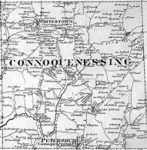 Traveling as far as the Cumberland River Valley, now the land south to Harrisburg, James and Thomas, Sr. awaited enough folks to brave the wilderness together. Finally, in 1791, the families, with eight small children, headed west over rough wagon roads that had been marked by government agents and scouts, finally stopping in what was to be called “Little Scotland,” or sometimes “New Scotland” in what is now Butler County.4 George Washington was nearly killed near here by an Indian guide while on his way to Fort LeBoeuf in Erie to order the French out of Western Pennsylvania after the establishment of British Fort Pitt in 1758. Thomas Gray’s Butler County deed for 400 acres there is dated 1792. While Thomas and Mary’s first four children had been born in the Old Country, the last four were born in Connoquenessing, an Indian word for a phrase meaning “for a long way straight,” referring more generally to the land around the Connoquenessing Creek.
Traveling as far as the Cumberland River Valley, now the land south to Harrisburg, James and Thomas, Sr. awaited enough folks to brave the wilderness together. Finally, in 1791, the families, with eight small children, headed west over rough wagon roads that had been marked by government agents and scouts, finally stopping in what was to be called “Little Scotland,” or sometimes “New Scotland” in what is now Butler County.4 George Washington was nearly killed near here by an Indian guide while on his way to Fort LeBoeuf in Erie to order the French out of Western Pennsylvania after the establishment of British Fort Pitt in 1758. Thomas Gray’s Butler County deed for 400 acres there is dated 1792. While Thomas and Mary’s first four children had been born in the Old Country, the last four were born in Connoquenessing, an Indian word for a phrase meaning “for a long way straight,” referring more generally to the land around the Connoquenessing Creek.
These Butler county Gray’s oldest son was named James. Born in Skibo in 1786 with some sort of physical disability, perhaps poor eye sight, that kept him from military service. His brothers volunteered for the War of 1812. He was at one time thought to be the father of our William Sylvester. But that James married Margaret Peterson, not Mary Patterson. Could Margaret have been Mary? Could the James Gray and Mary Peterson recorded in Rev. Abraham Boyd’s wedding journal in 1805 have been from this Skibo or New Scotland family? Not likely. Margaret was the oldest daughter of Peter Peterson, a famous French and Indian War hero, veteran of Braddock’s Defeat, and early settler of Butler County. As you can see from the link, the couple was married around 1812, a few years later than the Mary and James in question, and blessed with a dozen children, but no William Sylvester, my great-great grandfather.
After Margaret died in 1848, the family buried her with other Grays in the old White Oaks Spring Cemetery in Connoquenessing.5 This James Gray eventually migrated farther west to Piketon, Ohio, after two great losses in five years: the death of his wife and his father, Thomas, Sr., whom they called “The Old Pioneer.” Thomas had moved in with family in his old age to Armstrong County, just east of Butler. He is quoted as hoping his grandson Peterson Gray, son James’ oldest child, would leave the Connoquenessing homestead and join him in his place of retirement. He makes an interesting reference to Blairsville, a small town to the southeast straddling Indiana and Westmoreland Counties: “He is such a stalwart lad, and I fear he is not content in the old home since his brother Thomas went away east to Blairsville to settle.” We don’t know why Thomas, Jr. settled in Blairsville, but we wonder if there is a connection to our next Gray narrative which we call “New Westmoreland”? Today, there remains a Gray Station Road and a village called simply Gray, just south of Blairsville, and it lies within Westmoreland County.6
(Click to Return to “SECTIONS IN THIS ARTICLE”, Hit “Backspace,” or continue reading)
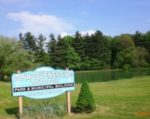
Connoquenessing Park, where our James & Mary Patterson Gray Reunions (1996/97) were held
3. NEW WESTMORELAND, PA
This Gray family, of Scots-Irish descent, the subject of our second alternative narrative for the origins of pioneer James Gray, apparently came through England during the Revolutionary War (1775-1783).7 Whether these Grays had been drafted to fight for the Redcoats or their emigration was coincidental, we don’t know. They were William, possibly our James’ father, his brother David, and the name of the third brother has been lost. Some believe his name was John. Following the old Forbes Road to Pittsburgh, now known as the Lincoln Highway or US Rt. 30, they stopped in what is now Westmoreland County. Tradition holds that David was captured by Indians while cutting trees to clear land for farming. The same tradition says that he married a squaw, but nothing else is known. Could his name have been Abner, as described in the above footnote?
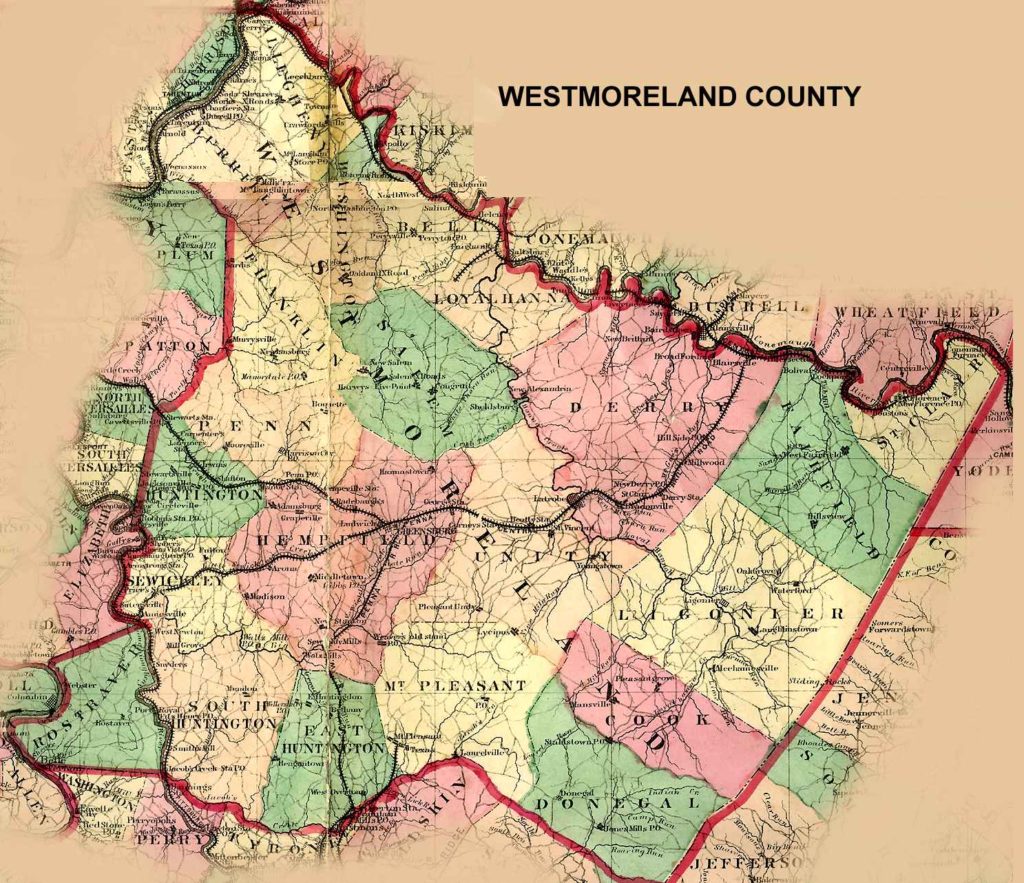
James Gray I (c.1725-1795) & Martha Jackson (c.1726-1803) and children: 1. William, Sr. (1757/62-1794) m. Mary Boreland (1764-1794 who remarried Hugh Torrance) and children James II (1788-1861) m. Anna Hope (1787-1837) (James remarried Rebecca Crosby) and their children a. James H. III (1814-1886); b. William S. III (1816-1879) m. Elizabeth Leslie; c. Rachel (1820- ); and Margaret Jane (1824-1880). William, Sr’s brothers were 2. George m. Jane Hope and 3. David (captured by Indians). James I had at least one other grandchild James II through son George.
The 1800 Federal Census Index for Allegheny County, PA, reveals that who is believed to be our James Gray is listed alphabetically next to a Mary Gray. Why is this woman in the document, when usually only the “head of household” is included? She was widowed by 1800, but we don’t know from whom, except that the family lived in Plumb Township, but she would have been considered head of household. We’ll soon see that there were other Grays on that side of the Allegheny. That was her home. 8William Gray (1757/62-1794), one of the three brothers in the original New Westmoreland family, whom we believe may have been our James’ father, and my Great-grandfather William Patterson Gray’s namesake, had carved out a small farm along the Brush Creek near Greensburg. He married Mary Boreland (1764-1838). 9 One more question as to our James and Mary Patterson Gray marrying in 1805. Why was it nine years, according to my records, until the first child was born, John H.? Surely, my records are incomplete.
The Gush and Long Ancestry.com trees don’t always line up with our James and Mary Patterson Gray being the progenitors of my Grays. Their James married twice, the second time to Anna Hope of West Deer Township. Their James’ brother George married Jane Hope, probably Anna’s sister, also from West Deer. But could this be the missing tie between the Grays of Westmoreland and their eventual settlement in West Deer? James and Anna had at least four children, according to the Gush Tree, James H. (1814-1886), William S. (1816-1879), Rachel (b. 1820), and Margaret Jane (1824-1880), who lived in Stewartsville, near Brush Creek. Could this William have been my Great-grandfather William Sylvester Gray? The dates certainly fit. James’ second marriage is said to have been to Rebecca Crosby (b. 1820), young enough to have been a twin sister to Rachel daughter. James would have been over 30 years older than Rebecca. Or could this be a misinterpretation of Census data? Nevertheless, by the 1840 Census and after the death of Anna, this James had moved south to Stewartsville, North Huntington Township, still in Westmoreland County. He practiced blacksmithing and did some farming there. Both Brush Creek and Long Run Presbyterian Cemetery records there have Grays. A James is buried near both a Rachel and Rebecca. I still have some work to do here,10, but this might also explain our James’ apparent disappearance from West Deer Township after 1800 and showing up in the Westmoreland County 1840 census. A trip to that courthouse and a look at a possible Last Will & Testament may solve our mystery. We wonder why none of this family information was ever passed on to my mother’s Grays of West Deer Township, that I know of. Family historian and Ancestry.com aficionado Margaret Long says that her mother worked on various family history for half a century and, while her mother didn’t keep the best source records, she did use family Bible enumerations and met regularly with relatives and neighbors to compare histories. Margaret says that further information came from cemeteries, courthouses, and libraries. I’m seeking copies of some of this data, hoping to find the namesake of my Great-great grandfather William Patterson Gray.
Today there is a Boreland Farm Road near Murraysville, west of Greensburg. William and Mary had three children: James (1788-1861), our supposed ancestor, George (1791-1876)11, and John (1792- ). After William’s death in his early thirties, Mary remarried in 1797, to Maj. Hugh Torrance, Jr. (1745-1830), of Revolutionary War fame, and they produced five step-siblings to our Gray family. Mary Gray’s second husband was second son of Major Hugh Torrance, Sr. (1701-1784), descendant of notable Ulstermen. 12
Hugh and Mary Boreland Gray Torrance’s family, true to the Scottish tradition, included another James, who loved to tell the story of his grandfather meeting the Marquis de LaFayette during his service in the war. That full story is available in Jefferson County, PA – Her Pioneers & People . Major Torrance is buried on his Manordale farm. Mary lived to be 74 and was laid to rest in the Congruity Presbyterian churchyard, a few miles away, near New Alexandria, located along what is now US Rt. 22.
(Click to Return to “SECTIONS IN THIS ARTICLE”, Hit “Backspace,” or continue reading)
4. MISCELLANEOUS MATERIAL ON EARLY JAMES GRAYS OF THE WESTERN PENNSYLVANIA FRONTIER
Finally, let’s consider some incidental information on area families with the same names. As we said earlier in our footnotes, the first known permanent settler in what is now known as Westmoreland County was Mathias Cowan in 1761. Historians refer to his wife only as “Miss Gray,” but today we believe it was Rachel, and her sister Mary wed Mathias’ brother David. They are listed on the 1773 “List of Taxable Inhabitants” of Westmoreland County along with James and Thomas Gray of nearby Fairfield and Hempfield Townships. An abstract of Thomas’ Last Will & Testament can be found there in the public records of 1823. Another document, “Early Landowners of Pennsylvania: Atlas of Patents for Westmoreland County,” lists the following Grays: William in Donegal (1769), George in Washington Township (1775), Thomas in Lower Burrel (1797), and James in North Huntingdon (1820) transferred to sons William and James, Jr.
A Richard Gray was born in County Donegal, Ireland, in 1781, and after living in Philadelphia for a time, married the daughter of a American Revolutionary War Colonel, and moved to Pittsburgh to start a brick manufacturing business. One of his five children was James A. Gray (d.1876), a prominent politician and businessman.
Other Grays are listed in early Allegheny County Censuses by head of household in various townships as follows:
1790 – Pitt Township Daniel (no specific age)
1790 – Plum Township Thomas, James, Alex (2), and Moses (no specific ages)
1800 – Allegheny Co. James and William (as listed earlier, both over 45)
The 1850 U.S. Census for Allegheny County lists a James Gray (b. 1780), born in Ireland and living in the Pittsburgh First Ward with a Mary (b. 1797), 3 children and an Ellen McCarty (age 30). Now, “James,” referring to the king of both Scotland, James VI, and England, James I, is perhaps the most popular Scots-Irish male name. Could this have been our William’s father? Was Mary James’ wife, even with 17 years difference in ages, or a daughter. She would have been too young for the 1805 wedding covered in an earlier article. Maybe a second wife? Could Ellen have been a married daughter or a housekeeper? So many possibilities, and again, we’ll surely never know the whole story.
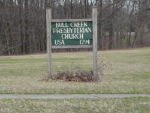
(Click to Return to “SECTIONS IN THIS ARTICLE”, Hit “Backspace,” or continue reading)
5. CONCLUSION
My quest to find the origins of my three-time (3X) Great-grandfather James Gray and wife Mary Patterson of West Deer township, Allegheny County, PA, began with a single primary source, the various Federal censuses for Allegheny County, 1790 and on. Secondary sources included the Lee history of Middlesex Township, Butler County; the reprinted marriage journal of the Rev. Abraham Boyd; and various Gray family trees from Ancestry.com. A great deal of time was spent in libraries, history centers, and on the internet. At this point, as interesting and coincidental as it is, I believe we can eliminate from consideration as part of our Gray heritage the “Skibo” narrative, also called “New Scotland” in Connoquenessing, Butler County. It’s just too well documented. This goes without saying that the “Old Pioneer” and others of that family eventually moved back eastward into Armstrong and modern Westmoreland Counties, possibly mingling with Grays from our second alternative narrative.
Our second account, which we called “New Westmoreland,” holds that greatest possibility of connection, although we may never find a primary source linking us with them. As with the Butler County story, so many of the names and dates match. The geographical proximity is uncanny, just across the Allegheny River. But, given the Scottish naming patterns, I now lean toward recognizing William and Mary Boreland Gray of Westmoreland County as the progenitors of our James Gray, although a caution is necessary here: the William and Elizabeth Gray family found in the 1870 Census of North Versailles, Allegheny County, cannot be ours. Most of the dates don’t match ours nor do the names of the siblings. I have adjusted Our Gray Family Tree accordingly, but with a caveat. The rest of the names, dates, and places laid out in the final section of this investigation are no less relevant to the confusion as to the origins of our Gray family. Surely, given the tiny population on the Western Pennsylvania frontier in the late 18th and early 19th centuries, some of these Grays must have encountered each other. No doubt some were “cousins” from the Old Country. But our research continues with more reporting to come. I hope you’ve enjoyed this account and have taken the time to view the links above and the footnotes below. Now, have a look at the Works Cited and other documents that follow, and by all means send along comments, inquiries, and discoveries for the mutual benefit of us Gray descendants. If you can benefit from any of this material or I have caused you to question any of the conjectures or possibilities here, then I have accomplished my purpose.13
Last revised: 4/19/18
(Click to Return to “SECTIONS IN THIS ARTICLE” or Hit “Backspace”
-
6. FOOTNOTES
Since my early Grays belonged to the Bull Creek church and were ministered to by Rev. Boyd (1770-1854), I had always assumed that the family oral tradition was correct, that a young James Gray emigrated from Northern Ireland with the Boyd family around 1790. In Merrie Olde Middlesex, author Lee tells the story of what she calls “the first of Middlesex’ small miracles”:
When Abraham [Boyd or Fulton, family traveling companions?] arrived with his family at the port of Londonderry, Ireland, to set sail for America, the ship’s captain flatly refused to let the huge tribe of Boyds set sail. They were instead put into quarantine because young Abraham [in this case, Boyd] and his brother John had smallpox. While waiting out the period, the Boyds learned that the ship they originally were to have sailed on foundered at sea with loss of all lives. (57)Who wouldn’t remember that story and perhaps associate ones family with this courageous group? After all, the Rev. Abraham Boyd had been instrumental in the founding of at least a half dozen frontier churches, and most of them had members named Gray and Patterson, or Peterson. One problem, however, is that the Boyds sailed in 1772, when Abraham was only eighteen-months old and our James probably hadn’t been born yet. Recent research confirms that the Boyd family sailed from Londonderry, Ireland, with the Fulton family, father John Boyd’s in-laws, about 14 total, on the ship General Wolfe which was guided by Captain Hunter on June 25, 1772. It arrived at Hampton Roads, VA, on October 16 that same year. The New York Journal of that month and year recounts, “This ship, it is said, had been seventeen weeks on the passage, nearly half the time short allowance, came out with 300, of whom about 80 died at sea of mere want and the disorders arising from it, in drinking salt water, etc. Part of the time the allowance was half a biscuit and half a pint of water a day.” The newspaper story continues that the ship dropped the Boyds and Fultons and others at Hampton Roads before sailing on up the bay to Baltimore: “Eighty of them were, the same afternoon landed at Hampton, mere skeletons, so weak that they could hardly walk or stand, and most of them without any money for their support. The inhabitants charitably took care of them and supplied them with necessities.” Additional accounts describe the narrow, muddy wagon road over the mountains to Westmoreland and eventually Allegheny Counties in Western Pennsylvania.
- First, not unlike my wife’s German ancestors, the Scots-Irish naming patterns are very repetitive, as we’ve seen above, and include kings (James), Bible characters (Mary), and lots and lots of aunts, uncles, and grandparents (William, George, Samuel, Thomas, Henry, etc.). This will become more evident as we proceed and can be confusing. But second, repetitiveness can be a good thing because the same Scottish naming pattern suggests that my great-great-great-grandfather James and wife Mary, if indeed that’s who they were, probably took their names from ancestors. As far as spellings and pronunciations of many family names, changes were not uncommon from the time they set sail in the old country until they landed and encountered the other cultures and communities in the New World. Mary Peterson in Rev. Boyd’s records could easily have been Mary Patterson. Sometimes Gray is spelled “Grey.” I recently learned that some of the Grays of West Deer Township were not only unrelated but were of German origin, according to census records. This came as quite a shock. Was the old Gray’s Mill, now Russellton, in West Deer Township run by Germans? I’m certain that my ancestors were Scots-Irish by their given names. Other questions have recently arisen. According to the wonderful collection entitled West Deer Township: a Century and a Half of Progress, Gray’s Mill was originally known as McConnell’s mill and tavern in the early 19th century. Was Thomas McConnell, the innkeeper, related to the Rev. James McConnell (1770-1848), the first minister of the Deer Creek Presbyterian Church, Bairdford Road, West Deer Township and one of the first pastors at the White Oak Springs Presbyterian in southern Butler County. Shortly, we’ll learn about another credible James and Mary Gray alternative narrative involving the White Oak Springs church. Was there a family connection between the White Oak and Deer Creek Churches? For that matter, and not to complicate things, Rev. Boyd served both the Bull Creek church, the older Deer Creek church (now Springdale Presbyterian), and the Middlesex Presbyterian, which is near the White Oak Springs church. Could that service have brought our Grays and Pattersons together?
- This settlement is sometimes, unfortunately, referred to as “New Westmoreland,” not to be confused with our second narrative that we will call “New Westmoreland,” which is really now “old” Westmoreland as the name is still in use today as simply “Westmoreland County.” This regional name is taken from the Old English as “Westmoringaland,” meaning “territory of the people living west of the moors” (i.e. the Pennines). Formed from several other Pennsylvania counties in 1773, Westmoreland now lies between Allegheny and Somerset Counties.
- Apparently, brothers John and William stayed in Cumberland Valley, at least for a time. One of the families that traveled with the Grays was Peter McKinney and wife. They have the distinction of birthing the first white child born in Butler County, a daughter. The original settlement there was originally know by several names: McKinney’s Tavern, Petersburg, or Petersville.
- The descriptions and colorful stories found in Graham’s The Gray Clan of life on the frontier are worth reading and surely worthy of future articles. For example, over the years Connoquenessing Township has had three churches, including the oldest, Mt. Nebo Presbyterian organized in 1805; second oldest, White Oak Springs Presbyterian, which was formed in 1816 when some members of Mt. Nebo became dissatisfied over which version of the Psalms should be sung (Who said the Scots-Irish couldn’t “sweat the small stuff,” so to speak?) and St. Fidelis Roman Catholic. White Oak Springs, the Gray’s church, has had 26 pastors in its 200-year history, one of which was Rev. J.B. Borland around 1895. Was he related to the Borlands of Westmoreland County of whom we’ll hear of later? Also, remember the connection between the White Oak Springs Church and West Deer Township, namely the Rev. James McConnell, a probationer “fresh from Ireland,” who was the first pastor of the Deer Creek Church and itinerant to the Connoquenessing church .
- Gray Station was a stop on the Pennsylvania Railroad for loading “black diamonds” from the Latrobe Coal Company, purchased in 1906 from the German Brenizer Family who had owned and operated the rich 72-inch thick Pittsburgh Coal Seam. Westmoreland Mining, owned by Paul Graff, operated the mine until 1952. Another internet search has turned up underground activity at the Mt. Gray Mines in Westmoreland County. We’ll want to go deeper into that inquiry.
- John K. Fleming’s book “Cowans of County Down” mentions sisters Rachel and Mary Gray who married brothers Mathias and David Cowan, originally from County Down, Northern Ireland. The Grays are described as Associate Reformed Presbyterians, Covenanters or Seceders, now United Presbyterians, as have been my Grays, whereas the Cowans were mainline, Church of Scotland. Not surprising, Rachel’s father was named James, probably born in Chester County, PA. The Grays are found on the Westmoreland tax roles of 1773. The older James took part of his family to Kentucky five years later. Fleming believes that our William S. may be named for his grandfather, the ninth of ten children of that family who married Mary Boreland. Rachel and Mary Gray’s father-in-law, Mathias, was born in Lancaster County and is believed to have arrived in Westmoreland County as early as 1761, possibly the first permanent settler in those parts. It’s said he came in a covered wagon, where he and Rachel lived until a log cabin could be built. According to John Boucher, Rachel and Mary’s brother Abner, who had accompanied them, was captured by the Indians there.
Other early Westmoreland Grays include Henry (d.1823), married to Susannah Liggit, who moved on to Muskingum in the Ohio Territory around 1800, leaving their oldest son James behind. Could this have been the James in the Deer Township census? Were they related to the other aforementioned Grays? Another early Gray to Westmoreland was Israel (1772-1846), also from Chester County, who married Rebecca Dixon and made their home in Derry Township, Westmoreland County. He is believed to have been a Quaker but surely couldn’t find such a meeting house on the frontier. Our research continues. Was this Gray family related to Thomas “the Old Pioneer” of Skibo and the reason some of his descendants settled near Blairsville? The History of Indiana County mentions a William Gray (1811-1896) and Samuel Dixon as early farmers along the Conemaugh River, famously part of the Pennsylvania Canal.
- Modern Plum Township, as it’s now spelled, is across the Allegheny River from Deer Township, now largely East and West Deer Townships. Upon further review, the 1800 Plum census, labeled “Plumb” , lists spinster Mary Gray, widow, age 26-45 with 2 children under the age of 10. Could she have originally been a Patterson? The Plumb census also records a Robert Patterson, a weaver, over the age of 45 with wife and seven children. Could he have been her father? Going further back, the 1790 Pitt Township, Allegheny Co. census lists only a Daniel Gray, with a household of nine, and several Pattersons. Could any of them be related? There was also a James Patterson in 1790 Elizabeth Township, Allegheny County, perhaps too far south, but worth considering as our Mary’s father.There are no other Grays found north of the Allegheny River. On the other hand, by 1800, we find at least three Pattersons there: Robert in Pine Township and John in Pitt. Unfortunately, with so little to go on in those early census records, we’ll probably never know.
- The Gush and Long family trees on Ancestry.com point to the same James Gray (1788-1861), the oldest son of William and Mary, living at Manordale Farm, northwest of Greensburg near Delmont just off Rt. 22 in Westmoreland County, PA. It became a stop on the Pennsylvania Railroad and is now Manor Station or the Borough of Manor, a well-to-do Pittsburgh suburb. While there are many Borelands in the early Franklin Township census records, we are uncertain at this time if Mary Boreland’s father was John (1746-1830) or Samuel (1748-1811), both of whom sired many children, but these brothers had split a 462-acre farm inherited from their father, Samuel, Sr. He had acquired it from the Philadelphia Penn Family. It was originally called “The Manor of Denmark,” but more recently has been known as “Seven Acre Hill Farm.” Until 1936 it had been in the Boreland Family for seven generations.
- A history of North Huntingdon Township says that Shortly after Col. John Irwin founded the town of the same name “there came a large number of Scotch-Irish Presbyerians who settled along Brush Creek, and to the north of that stream, Among these were the McCormicks, Osbornes, Boyds, Sloans, Coulters, Ewings, Greens, Wilsons, Larimers, Rindmans, Marshalls, Simpsons, Duffs, Corrys, Grays, Temples, and others, Many of these did not come until after the close of the Revolutionary war, but all of them were there prior to 1796.”
- George Gray, James’ brother, served as a blacksmith in North Versailles, near McKeesport. His shop stood until the early 1900’s as a reminder of the hard life on the frontier. Before he died, George farmed a large holding of land. He married Jane Hope, probably Anna’s sister from West Deer, and they parented six children, among them a merchant, a builder, a blacksmith, and yet another son James (1815-1891), a farmer
- It’s reported that in 1306, two brothers by the name of Torrance, fishermen by trade, saved the life of Robert the Bruce, king of the Scots. After serving under William of Orange in the Siege of Derry and the Battle of the Boyne, some of the Torrance family emigrated to Cumberland Valley, then on to Western Pennsylvania.
(Click to Return to “SECTIONS IN THIS ARTICLE”, Hit “Backspace,” or continue reading)
7. WORKS CITED & DOCUMENTATION
Mike Boyd. “Boyds in Allegheny Co., PA.” BOYD-L Archives. 22 Dec. 2010
John Newton Boucher. History of Westmoreland County, PA. New York: Lewis Publishing Co., 1906
John Newton Boucher. Old and New Westmoreland. New York: American Historical Society, 1918
http://digital.library.pitt.edu/cgi-bin/t/text/text-idx?idno=01aaw3537m;view=toc;c=pitttextBob and Mary Closson. 175 Southwestern Pennsylvania Marriages Performed by Rev. Abraham Boyd (1802-1849). Apollo, PA: Closson Press, 1976
Grace S. Graham. The Gray Clan. Butler, PA: Typed & copied, c. 1950
Edna Gray research materials & family tradition
Gush Family Tree. Ancestry.com. 30 March 2016
History of Butler County, PA, 1883
John W. Jordan. Genealogical and Personal History of Western Pennsylvania. New York: Lewis Historical Publishing Company, 1915. p.1208
https://archive.org/details/genealogicalpers01injordCaroljo Forsythe Lee. Merrie Olde Middlesex. reprinted Chicora, PA: Mechling Bookbindery, 2008
John J. Lolla, Jr. The Creek Runs Deep: Two Centuries of Salvation History. (5 vols.) Plum, PA: Plum Creek Presbyterian Church, 2008
Margaret Long. Various family trees. Ancestry.com
William James McKnight. Jefferson County, PA – Her Pioneers and People, Vol. II. Chicago: J.H. Beers & Company, 1917
https://archive.org/details/jeffersoncountyp01mckn

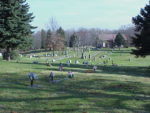
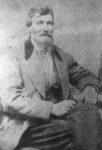

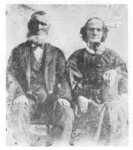
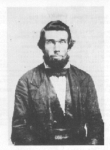

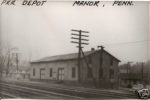
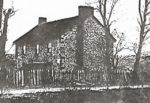
Great article Larry! I have also spent years researching these various Gray families. I am a descendant of James Gray (b.1787-1866/67) through his daughter Sophia. I was lucky that Sophia’s husband Washington Bartley petitioned the court about James Gray’s will, so I had a starting point.
Some of the commonly published information on ancestry is not entirely correct, as I am sure you are very aware. I am not sure of the Piketon, Ohio death for James, as his will indicates he was to be buried with his wife in White Oak Springs Cemetery in Butler County.
Of course DNA is the new frontier of genealogy and my current passion. I have a confirmed DNA match with a descendant of James’s brother, John. So to the degree that the paper trail can be connected to the science, I know that I am very likely a descendant of James Gray. At my 5th great grandparent, this is at the edge of reliable testing, but still a great genealogical resource. If you have taken an ancestry test, or take one in the future, let me know your ancestry user id and I will check to see if you are a match.
Greetings, Eric. Thank you for your kind words. I just finished an article on early Pearces of the Jersey Settlement below Pittsburgh (click on link at top RH column). Ironically, that’s probably the same area that my James Gray came from. I’m sending you my user ID directly in hopes that you can return some new connections. Regards,
Larry
Hello!
I, too, am researching several Gray family lines from Pennsylvania. My brick wall is George G Gray born about 1780 in Pennsylvania and died 1837 in Jackson County, Ohio. His wife, Hannah Bennett, was born in Pennsylvania about 1790, likely between Mifflin County and Pittsburgh. They named their first son Samuel (also the name of Hannah’s father) and their second son, my 3rd great grandfather’s name was James. I see these names repeated over and over in the Gray family lines of Pennsylvania, so I’ve all but given up hope as I search for George’s parents and/or siblings.
Thank you for putting all this information together and on here. I cannot find a connection to the Grays from Skibo either. Your information gives me hope that I will find George’s family one day.
And, yes, my DNA is at many of the different DNA sites as is my uncle’s Y-DNA.
Hi Ida. I’ll keep my eyes open for old George, the wall builder ;>) When you mentioned Samuel, I remembered all the primary writings back and forth between my G-grandfather Robert and his brother. Type “Samuel” in “search” if you haven’t already. Please stay in touch with any new info. Thanks,
Larry
I came across this article about Enrique Antonio Mexia’s estate. He died in 1896. The articles are from 1901. I became intrigued so I followed it through several Papers to see who would win his fortune. One of his wife’s in the case is Mary Gray. The paper says she is the daughter William Coleman Gray of Patterson N.Y. And she belongs to one of the oldest New York families. Her grandfather being James Gray of Rye New York. Not sure if these are the grays in your family. I was looking for information about her grandfather I came across your James Gray and this website. My Brickwall is a Gray so I’m always reading about Grays. Newspaper I read the family information in is The Piqua Daily Call June 3 1901. Pg 945. On newspapers.com
My brickwall is a Gray.
Hi Larry,
Your work to unsnarl the fact and fiction surrounding the various Gray families is truly commendable!
I’m looking at the family of Thomas Gray (ca. 1761-ca. 1853) of Connoquenessing, Butler County, Pennsylvania from an entirely different perspective. I am the co-administrator of the Cochran DNA project sponsored by FTDNA.com and two of Thomas Gray’s descendants have taken y-chromosome tests through FTDNA.com — one of them took a Big Y-700 marker test which is capable of showing the ancestral haplogroup of the direct line of the test taker. In their case, their haplogroup R-FTC23101, is estimated to have emerged around 1250/1300 A.D. out of its parent haplogroup, R-YP5244, which itself emerged around the year 1100 A.D.
The interesting thing is that R-YP5244 is the “stem” haplogroup of my own Cochran(e) ancestors which spawned another haplogroup R-YP5242 at about the same time as R-FTC23101. There is yet a third descendant haplogroup of R-YP5244 which is populated today by Cochranes living mostly in New Zealand, descendants of a Cochrane born in County Down.
There are many reasons why two men sharing a match via a y-chromosome test may not share the same surname, though biologically, eventually the two must descend from the same direct-line ancestor. Purposeful name changes, adoptions, and miscellaneous NPEs (non-parental events) may account for the difference. Or, it could well be that the ancestor in common lived before surnames were widely used and certain lines of descent used one surname, others employed another.
So, I looked at the book that you mentioned — the Clan Gray — by Grace Sarah (Bish) Graham, apparently published in the 1950’s. According to this book, Thomas Gray and his wife Mary James were married in Scotland where their three oldest children, Sophia (1784-1871) — later married John Critchlow — James (1786-1868) and William (1789-1847?) — all supposedly in Skibo, Scotland. I don’t find any direct reference to a source for that birthplace assignment in Mrs. Graham’s book. And, curiously, the 1850/1860 census returns showing Sophia and James show their birthplaces as Pennsylvania. And for the children of Sophia and James I have been able to find in the 1880 census — none of them state their mother (in Sophia’s case) or father (in James’ case) were born in Scotland — but rather in Pennsylvania!
Perhaps you have been able to ferret out some explicit source of information that pegs the Grays to Scotland (apart from Mrs. Graham’s book). If so, I’d be most interested to hear from you!
Thanks.
Oh, Richard! My head is spinning from all your work. I see it’s been some time since I tried to connect my West Deer Twp, Allegheny County, PA Grays to just south across the Allegheny River and even into Westmoreland County. I’ll have to review my research, but I think it’s safe to say that most history is subject to change, depending on the facts uncovered. I know I’m sometimes guilty of skipping a few generations to get back to the “Old Country” for the sake of expediency. Keep up the good work and please let me know where it leads. Larry